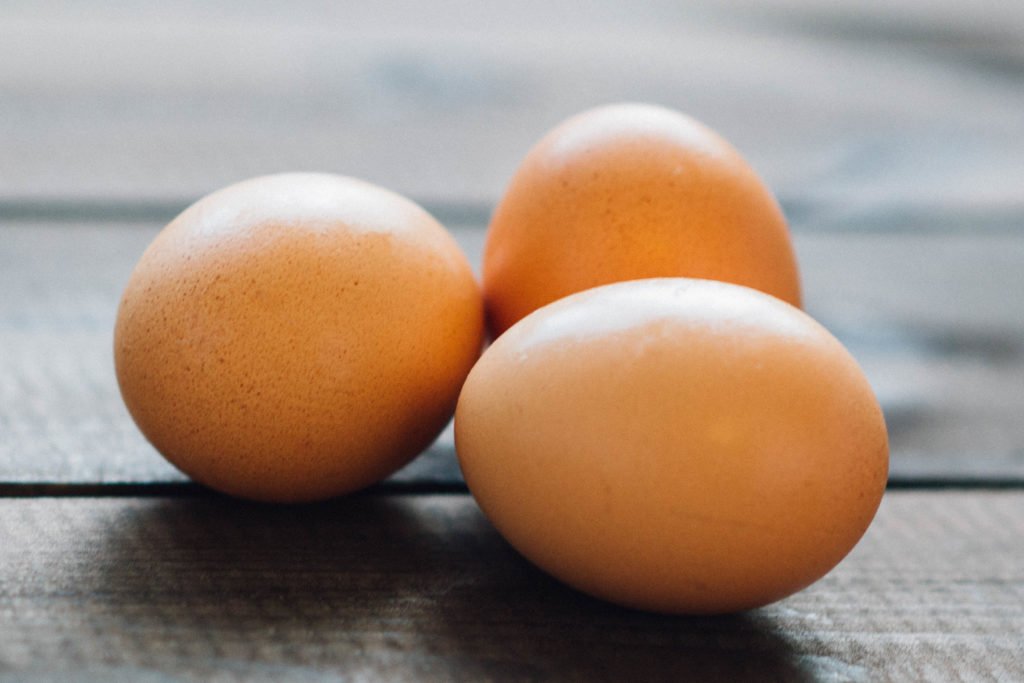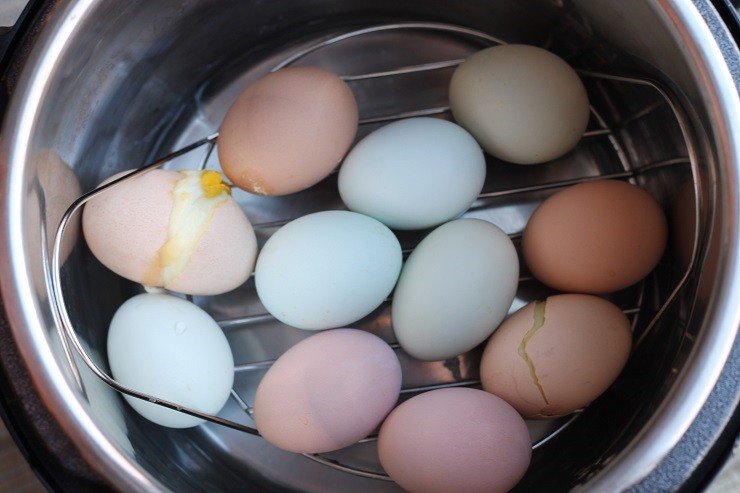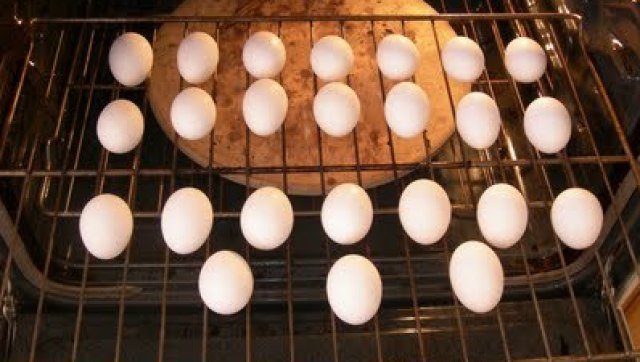
Eggs are little nutrition bombs. The combination of efficient, natural packaging and diverse, dense nutrition is hard to beat. Eggs also provide a wide array of choices balancing effort and result. A still-hot fried or poached egg is deliriously delicious and a good way to impress someone. A dozen hard eggs cook and store extremely efficiently and they’re okay eating.
It’s hard to make eggs taste bad, and technically you don’t even have to cook them if you’re in a hurry, but if you do want to cook them (duh) how should you do it? 1
Cooking eggs inside their shell until hard is versatile because the results store and transport well. What’s worked for me is to steam them in batches. This approach has an egg-cellent results:effort ratio. The quantities 2 and temperatures 3 take care of themselves.

Total time is 15-30 minutes. This assumes you have a way to steam.
- the best results seem to come from eggs that are older (so the skin is less attached to the shell)
- drop the eggs into a container of water and if they float then puncture the shell to give the air pocket relief
- setup a covered pot such that it will have a little water (an inch or so) underneath a steamer insert 4
- boil that water at whatever heat you want (higher is faster)
- when the water reaches a nice rolling boil, put the eggs into the steamer insert and cover the pot
- let the eggs cook for 12 minutes (adjust this time for best results) or half that for soft eggs
- you can eat them now if you want them hot
- for storage or aesthetics, immediately chill the eggs in cold water (colder the better, but tap water is fine)
- break the shells (just shake the container around)
- peel under running tap water (you can wait 15 minutes for the eggs to fully cool down which can make things a bit easier)
If you want to prove how easy this approach makes cooking hard eggs just start a batch and then pull out one egg every couple minutes. Compare results at different times.
The biggest confounding factor here is the age of the egg. Newer eggs have stronger internal connections, which means they’re better for frying or poaching (firmer, rounder results) but worse for cooking in the shell because the shell tends to stick. Older eggs are great for in-shell cooking.
Egg-specially if you drop them straight into the cooking temperature. In all cases, if you can get the outer surface of the egg to cook as fast as possible you’ve got the best chance of popping the skin loose from the shell, making peeling easy. Along the same lines, if you can bring the temperature back down as fast as possible you’re more likely to detach the skin from the shell.

NOTE: Baking the eggs (in-shell) in the oven is probably the most efficient method, but ovens are big and hot and unreliable so it’s only appropriate if you need many dozens of cooked eggs and are okay with many of them being over cooked. Boiling the eggs instead of steaming works too, but it requires more water, more time to deal with more water, and the best approach requires a rack of ice cubes. 5 Other methods like frying, poaching, and omelette-ing sacrifice efficiency for a particular experience and are only appropriate if you’re trying to impress someone. Scrambling is a great method if you’re consuming the eggs immediately because it’s easy to mix in other ingredients but the results don’t store well.
- J. Kenji Lopez-Alt has the definitive guide(s) for cooking eggs ↩
- enough water to not run dry during a 12 minute boil and as many eggs as fit into the pot ↩
- steam is always the same temperature and it spreads out evenly ↩
- You can hack together your own insert if you’re a little handy since it just has to be the right height and temperature resistant. I grabbed a cheap cooling rack out of the drawer and cut/bent it into a little table that fit inside my pot ↩
- from Kenji’s Food Lab book, you drop them into the boiling water 30 seconds after the eggs to fast cook the outside and medium cook the inside ↩
Be First to Comment